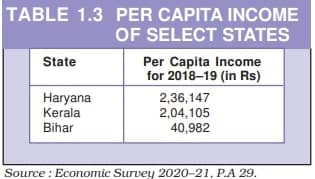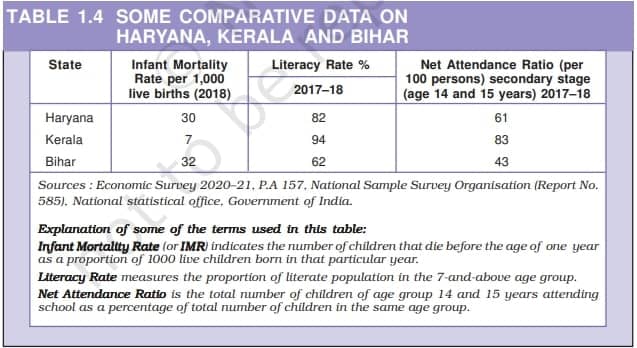NCERT Economics Class 10 | Income And Other Criteria – Concept
Topic & sub-topics covered: Income And Other Criteria: Development (All single detail notes are exam-oriented).
We have discussed in-depth and exam-oriented pointers that can be asked in the board exam of class 10th about “Income And Other Criteria” which is taken from the NCERT Economics for class 10th chapter no. 1 “Development“.
Download NCERT Economics Chapter 1 Class 10th Notes PDF for “Development”
Embark on a journey to understand the intricate dynamics of economic development with NCERT Economics Chapter 1 Class 10th Notes. Delving into the essence of “Development,” these notes offer a comprehensive overview of key concepts, theories, and real-world examples.
Download NCERT Class 10 Economics Chapter 1 Notes Development Economics Class 10 Chapter 1 Notes PDF
Available in PDF format, these notes provide a convenient and accessible resource for Class 10th students to enhance their understanding, facilitate revision, and excel in their studies. Download NCERT Economics Chapter 1 Class 10th Notes PDF now and unlock the keys to comprehending the dynamics of development in the global context.
Income And Other Criteria
1. Attributes of Development:
- Beyond average income, the development encompasses various attributes such as security, respect, equal treatment, and freedom.
2. Example Analysis:
- Analyzing the per capita income of Haryana, Kerala, and Bihar provides insights into their relative development.

3. Per Capita Income Comparison:
- Haryana has the highest per capita income, while Bihar has the lowest, indicating differences in economic prosperity.
4. Consideration of Other Data:

- Examining additional data from Table 1.4 sheds light on the multifaceted nature of development.
5. Infant Mortality Rate (IMR):
- Kerala has a significantly lower IMR compared to Haryana, highlighting disparities in healthcare and child well-being.
6. Impact of High IMR:
- High IMR reflects the heartbreaking reality of parents losing their children before their first birthday, emphasizing the human aspect of development.
7. Contemporary Relevance:
- The data pertains to 2018, showcasing persistent challenges despite India’s post-independence progress.
8. Education Disparities:
- Bihar faces challenges in education, with around half of children aged 14-15 not attending school beyond Class 8, indicating gaps in access to quality education.
9. Personal Reflection:
- Encourages students to empathize with the situation by imagining themselves in similar circumstances, fostering a deeper understanding of development issues.
10. Real-Life Impact:
- Illustrates the real-life consequences of development disparities, emphasizing the importance of addressing social and economic inequalities.
Next & Previous Topics of NCERT/CBSE Economics Class 10 Chapter 1: Development
FAQs
Q1. What are the attributes of development beyond average income?
Answer: Development encompasses attributes such as security, respect, equal treatment, and freedom, reflecting a holistic approach to societal progress.
Q2. What additional data is considered besides per capita income to understand development?
Answer: Additional data, such as infant mortality rate (IMR) and education statistics, provide a more comprehensive understanding of development challenges and disparities.
Q3. How does high IMR reflect the human aspect of development?
Answer: High IMR underscores the heartbreaking reality of parents losing their children before their first birthday, emphasizing the human impact of development challenges.
Q4. What education challenges does Bihar face, and what do they signify in terms of development?
Answer: Bihar’s education challenges, including low school attendance beyond Class 8, signify gaps in access to quality education, impacting overall development.
Q5. What long-term benefits can be achieved by addressing development disparities effectively?
Answer: By reducing disparities, societies can achieve greater social cohesion, economic stability, and sustainable development, benefiting all members of society.

